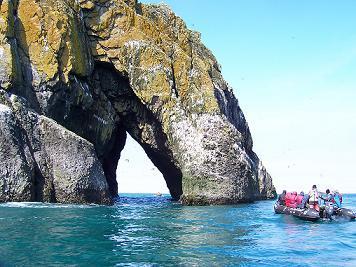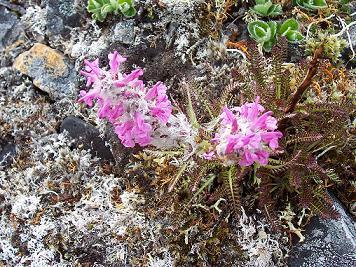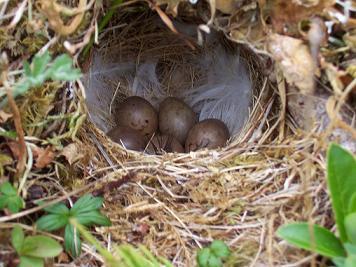
 |
 |
 |
 |
 |
| Home Page | Featured Articles | Awards | Photo Gallery | About Yvonne |
Pomarine jaeger, red-necked phalarope, rocky sandpiper, Lapland longspur, McKay’s bunting, bald eagle, black-legged kittiwake, parakeet auklet.
How many of those birds have you seen?
And are all those names real?
* * * * *
Birders are a dedicated lot.
They join organizations such as the National Audubon Society and American Birders’ Association and keep Life Lists--details of species seen when and where. They consider binoculars an essential accessory, know the difference between a streak and a line and seek out-of-the-way locales in search of a certain bird.
And birders have lots of fun.
Want to impress a birder?
Tell him or her you’ve seen McKay’s bunting. This small white bird with delicate dark markings on its wings is endemic (birder term for “you won’t see it anywhere else”) to Alaska’s St. Matthew’s Island, an uninhabited, windswept volcanic speck in the Bering Sea, just south of the Arctic Circle.
We’re hiking the treeless tundra with Wayne, Ted, Ian, Chris and Rosemary, dedicated birders who’ve traveled from the US, England and Australia hoping to see this special avian.
Landing on a black sandy beach, they immediately identify a northern fulmar, a seagull cousin, winging overhead.

As a pair of medium sized black birds with long necks wing past, Chris swings his binoculars around and says softly, “Red-faced cormorants.” (Birders neither shout nor point at birds.)
Even without binoculars, it’s easy to spot the red “face” above the cormorant’s bill.
Turning from the beach, Wayne leads the group inland, scouting to avoid falling into bogs. It’s easy to lose track of one’s way in the pathless tundra.
Wellingtons--rubber boots that come up to the knees--protect your feet as you slog over squishy moss, lichen, tussock grass, and wildflowers that compose the spongy terrain.

“Stop!”
Everyone halts dead in their tracks. Ted gestures ahead and whispers. “Don’t move. I flushed out a chick.”
Six pairs of eyes fasten ahead, seeing nothing in the dried brown and straw-colored grasses. Then a grass pile moves. It’s the well-disguised rock sandpiper chick, colored exactly as his surroundings. Cameras move slowly into position as the chick scuttles from grass tussock to tussock. But when the chick stops, he blends into his surroundings and becomes invisible.
“Mom’s here somewhere,” whispers Rosemary.
As if on cue, a female rock sandpiper appears ten feet beyond. She limps away from the humans.
“She’s faking being wounded in order to attract the predator to her and away from her chick,” says Ian. It’s easy to see how a bigger bird or Arctic fox might be tempted to follow the “wounded” bird, a potentially easy meal, instead of hunting for the well-disguised chick.
In minutes, the chick disappears into the brush well away from the birders and they continue their slow walk. A larger bird resembling a small falcon wheels overhead. “Pomarine jaeger,” announce Chris and Ted together.
“Jaegers are klepto-parasitic,” continues Ted. “Klepto-parasitics feed by stealing from other birds.” Sure enough, the jaeger chases a tern with a fish in its claws, harassing it until it drops the fish which the jaeger snatches in midair.
Stumbling over a lump in the tundra, your foot hangs up in a hole under it. “Vole hole,” confirms Ted. Voles, which resemble mice without tails, also form the jaeger’s diet “when it can’t steal anything tastier!” jokes Ted.
Wayne calls a halt along a marshy stream bed that widens into a bog. Chris sets his powerful scope into a tripod.
Birders do not hike far. Instead they stake out a likely location where they stand or sit quietly and wait for the birds to come to them.
Their patience is rewarded. Common teal, northern pintail, tufted duck, greater scaup, red-breasted merganser, semi-palmated plover, Siberian tattler and Lapland longspur land in the bog, ignore their observers and go about their avian lives.
But when it’s time to leave the island and still no McKay’s bunting, Chris consoles the group. “We added species to our Life Lists, even if we didn’t see the McKay’s.”
Even finding a nest of pippet’s eggs in the tundra fails to raise the birders’ spirits.

Rosemary spies it first, a flash of white out of the corner of her eye. She swivels around, her binoculars homing in as if glued. “McKay’s!” she squeals quietly.
Like formation flyers, birders raise binoculars or cameras in unison--but not before a second, then a third white shape fly into view.
The buntings settle about 25 feet away. Chris lends you his very powerful scope for a close-up view.
As if it lay in your hand, the bird’s fluffed out white body and head show perfect detail. It turns its dark eye directly at you. “What a pretty face,” you think. At the same time, Rosemary remarks, “Can you term a bird’s face as ‘pretty’?”
For several minutes, the group watches the trio until they take off.
Rosemary’s blue eyes dance with excitement as the group, now lively and talkative, resumes its walk back to the beach. “I’d’ve hated to return to Australia without seeing it. Who knows when I can return to Alaska?”
The group laughs. Chris reminds everyone, “Tomorrow we call on Hall Island, a great place to see the parakeet auklet!”
Yes, birders are a dedicated bunch.
And yes, all those names are real.
St. Matthew’s Island is one of the Pribilof Islands off the coast of Alaska, about as out-of-the-way as one can travel. Small ships and eco-tourism groups include it in their itineraries. Check with your travel agent for tours with Cruise West (www.cruisewest.com), Victor Emanuel Nature Tours (www.ventbird.com) or Zegrehm Expeditions (www.zeco.com).
c. The Ruidoso News Friday, August 3, 2007
